The Indian Sub-continent was the natural meeting place for Arab, Indian and Chinese maritime merchants. The Malabar Coast on the west of India and the Chola Coast on the east witnessed a great increase of trade while the ancient maritime trade route flourished. Along these coasts, kingdoms developed and grew, fueled in part by the income earned from trade. Along with foreign trade, the Indian kingdoms also began participating in providing their own trade items, including glass, precious stones, beads, spices, lumbar and many other items. The links below will lead you to more pages of information about India, and its connection to this ancient trade route.
Arab Ports of Call in India
Kerala, India is first mentioned (as Keralaputra) in a 3rd-century-BC rock inscription left by the Mauryan emperor Ashoka. In the first centuries AD this region became famous among the Arabs, Greeks, and Romans for its spices (especially pepper). During the first five centuries AD, the region was a part of Tamilakam and thus was sometimes partially controlled by the eastern Pandya and Cola (Chola) dynasties, as well as by the Ceras (Cheras). All during this time Arab traders plied the coast, purchasing spices. In the 1st century AD, Jewish immigrants arrived, and Syrian Orthodox Christians believe that St. Thomas the Apostle visited Kerala in the same century.
Konkan, India also called Aparanta, is the name for the coastal plain of western India, lying between the Arabian Sea (west) and the Western Ghats (east). The plain stretches approximately 530 kilometers (330 miles) from the Daman Ganga River north of Mumbai (Bombay) to the Terekhol River, and includes the city. The ports of the Konkan were known to the ancient Arab traders. The spice trade brought prosperity to the ancient Hindu kingdoms of the area. The cave temples of Elephanta Island and Kanheri bear testimony to the prosperous culture of this era. With the advent of the Portuguese (16th century) and British merchant marines (18th century), the port cities were further developed and fortified. Today these ports have lost their importance and are used only by coastal shipping and Arab Dhows transporting agricultural products to the Gulf coast.
The Gandhara region of India was a crossroads of cultural influences for many centuries. During the reign of the Indian emperor Ashoka (3rd century BC), the region became the scene of intensive Buddhist missionary activity; and, in the 1st century AD, rulers of the Kushan Empire, which included Gandhara, maintained contacts with Rome. In its interpretation of Buddhist legends, the Gandhara School incorporated many motifs and techniques from classical Roman and Greek art, including vine scrolls, cherubs bearing garlands, tritons, and Greek centaurs. The basic iconography, however, remained Indian.
Large hoards of Roman coins substantiate other evidence. These coins are mainly of the emperors Augustus (ruled 27 BC-AD14), Tiberius (ruled 14-37), and Nero (ruled 54-68). Their frequency suggests that the Romans paid for trade goods in gold coins. Many are over-struck with a bar, which may indicate that they were used as bullion in India. Interestingly enough, Pliny complained that the Indian luxury trade was depleting the Roman treasury. Roman coins in India are found most often in trading centers or near the sources of semiprecious stones, especially quartz and beryl. Cankam literature attests the prosperity of Yavana merchants trading in towns such as Kaveripattinam (in the Kaveri delta). The Periplus lists the major exports of India as pepper, precious stones, pearls, tortoise shells, ivory, spikenard and malabathrum (aromatic plants), silk and other textiles. For these, the Romans traded glass, copper, tin, lead, realgar (a red pigment), orpiment (a gold pigment), antimony, and wine, or else they paid in gold coins.
The Persian Gulf
It is also interesting to notice that two elaborate rock-cut tombs on Kharg Island in the Persian Gulf have been found. Some archeologists have noticed a likeness to Palmyrene hypogea, but Kaerink and Whitehouse, both archeologists, point out that this is probably not so. Since the tombs have a vestibule, main chamber, and numerous chambers, they could easily have been Nabataean in origin, although they do not bear all the characteristics of Nabataean tombs.
Maluku, Indonesia, is an island province in eastern Indonesia, which is known in English as the Moluccas. It comprises about 1,000 islands, which almost encircle the Banda Sea. The islands are bounded by the Pacific Ocean on the north, the Molucca Sea on the west, the Timor Sea on the south, and the Ceram Sea on the east. Commonly referred to as the Spice Islands by the early Indian, Chinese and Arab traders, the Moluccas later formed part of the Javanese Majapahit Empire and the Shrivijaya Empire (Sumatra). These islands were sources of rice, sago, coconut, spices (including cloves and nutmeg), resin, ironwood, rattan, timber, and tortoise shells.
Indian Pottery in Petra
During the last ten years I have been collecting pits and pieces of pottery from all over Nabataea. All of the pottery shards that I have picked up have been pieces that are simply laying on the surface of the myriad ancient sites scattered around Nabataea. Most of the pottery has been Nabataean, Roman, or Byzantine. A few pieces have been Painted Edomite, and a number of them have been East African Red Pottery. My collection isn’t large, but it does contain a number of interesting pieces found in some of the isolated locations around Nabataea. Recently, however, I have been brought face to face with an interesting challenge.
Indian archeologists, working in India have discovered this same African red slipped ware at the coastal site at Alagankulam. When they conducted a mineralogical analysis of this pottery however, they discovered that it originated from the Ganga Plains of North India, and not Tunisia as had been previously supposed. Dr. D. V. Gogte an Archaeological chemist of the Deccan College Research Institute has called for a further studies to be done on the so called African Red Pottery found throughout Nabataea. He feels that there is a distinct possibility that much of the pottery classified as African pottery found in Jordan could be revealed as Indian in origin.
Dr. Gogte has also pointed out some other interesting connections between India and the Nabataeans in his article Petra, the Periplus and Ancient Indo-Arabian Maritime Trade. He feels that according to the Periplus, Nabataean/Indian trade was very active in the first century AD. He goes on to say that “in spite of these references, no serious attempt has been made in the archaeological context to evaluate both spatially and temporally the trade of the Nabataeans with India. Considering the perishable nature of the trade items imported from India, the study of pottery appears to be a logical step in this direction.” In other words, if the goods have disappeared, perhaps we can find a connection by looking for remnants of the pottery that was used to transport and store these goods. He goes on to state that Indian Red Polished Ware and Indian Rouletted Ware from India should be compared with pottery found in Nabataea. Those wishing to study this topic in detail should get a hold of Dr. Gogte’s writings. However, we will try and summarize his findings below for those interested in just the highlights.
First of all, Identical pottery, known as Mould Ware has been found at Petra, and also on several early historic Indian sites. (100 BC - 200 AD). This mould ware is small, ranging in size from 4 to 6.5 cm, and was produced by joining two vertical moulded pieces together. The vertical joint is clearly visible, running from the rim to the bottom. The ware has different shades of red, from bright red to brownish. The archeologist Begley (1991) has classified this mould ware into four shapes.
- Cup with out-turned rim
- Straight sided bowls
- Deep cups with two bulges
- Bottles having bulbous body and a long next.
The most common decoration is a series of long petals radiating from the bottom part of the pottery. Other motifs consist of beads, ovals, bead and reel, and rosettes which appear between the ridges on the upper body.
The Petra mould ware was reported on by Schmitt-Korte in 1984. This pottery is different from the mould ware found at Samaria-Sebaste, and also different from Hebrew mould ware. The mould ware from Petra is identical in all respects to the pottery found in India. While this pottery is rare in Petra, it is found in large quantities in India, particularly at Ter and Kondapur. These sites were the principle settlements during the Early Historic periods of Indian History. These sites are also the same sites that Roman glass and bronzes have been found. The Periplus also tells us that all sorts of muslins and common cloth went from Ter to the harbors and marts on the coast of the Red Sea. To date, however, little physical proof of trade with India has been found within Nabataea.
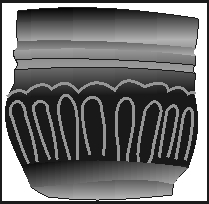
Drawing of a Mould Ware pot found in Petra
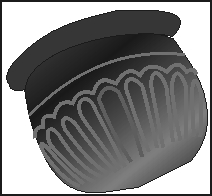
Drawing of Mould Ware pot found in India
Dr. Gogte ends his paper by mentioning that it would be interesting to search for Arabian pottery on the ancient sites along the coasts of India. Archeologists have noticed Mediterranean Amphorae and Arretine ware in India, but he notes that unpainted Nabataean pottery on Indian sites would be assumed to be Red Polished Ware from western India. Only mineralogical analysis could reveal their origin.
Bibliography
Ahmad, K. M. Inscribed and Riveted pottery from Kondapur, Kodapure Series 1, Hyderabad, India, 1950
Begley, V., Ceramic Evidence for Pre-Periplus Trade on the Indian Coasts, Pp 157-196, in V. Begley and R. D. De Puma (eds), Rome and India, Madison, The University of Wisconsin Press, 1991
Deshpande, M, N, Roman Pottery in India, Pp 275 - 284, in B. P. Sinha, (eds) Potteries in Ancient India, Patna, 1969
Gogte, Vishwas, D., Petra, The Periplus and Ancient Indo-Arabian Maritime Trade, Annual of the Department of Antiquities of Jordan, XLII, Amman, 1999
Gogte, Vishwas, D., Chandraketugarh-Tamlik Region of Bengal: Source of the early Historic Rouletted Ware from India and Southseast Asia, Man and Enviroment XXII (1):69-85, 1997
Nagaswamy, R., Alagankulam: An Indo-Roman Trading Port. Pp 247 - 254 in C. Margabandhu, K. S., Ramachandran, A. P. Sagar and D. K. Sinha (eds) Indian Archaeological Heritage, K. V. Soundarafan Felicitation Volume., New Delhi: Agamkula, 1991
Schmitt-Korte, K., Nabataean Pottery: A typological and Chronological Framework. Pp 7-40 in A. M. Abdalla, S. Al-Sakkar and R. Mortel (eds), Pre-Islamic Arabia, Studies in History of Arabia II, Riyadh: King Saud University, 1984
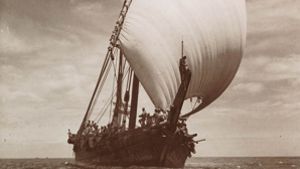
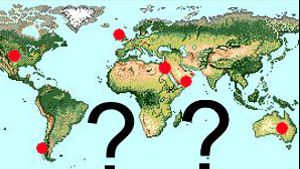
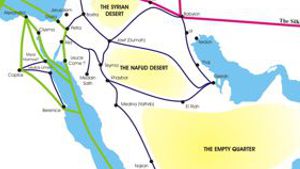
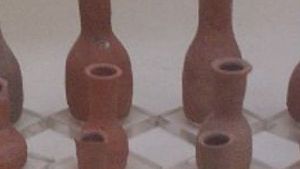

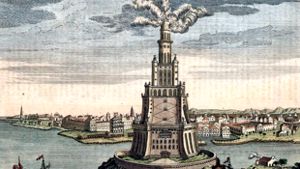




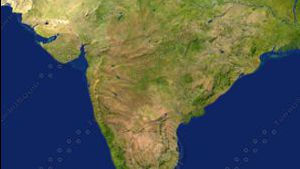
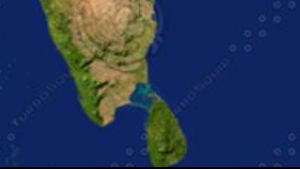

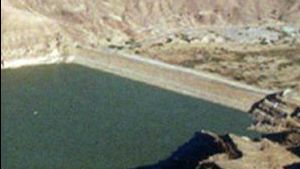
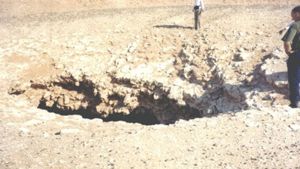

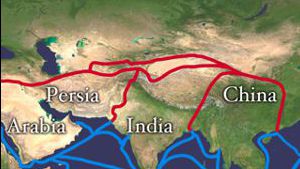
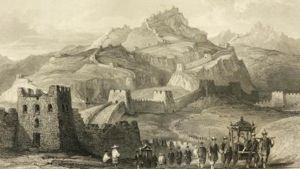
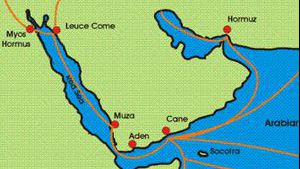
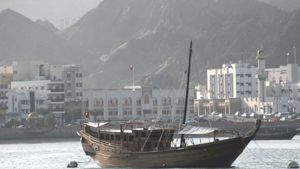

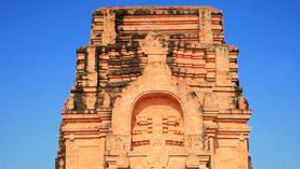


Page Discussion
Membership is required to comment. Membership is free of charge and available to everyone over the age of 16. Just click SignUp, or make a comment below. You will need a user name and a password. The system will automatically send a code to your email address. It should arrive in a few minutes. Enter the code, and you are finished.
Members who post adverts or use inappropriate language or make disrespectful comments will have their membership removed and be barred from the site. By becoming a member you agree to our Terms of Use and our Privacy, Cookies & Ad Policies. Remember that we will never, under any circumstances, sell or give your email address or private information to anyone unless required by law. Please keep your comments on topic. Thanks!